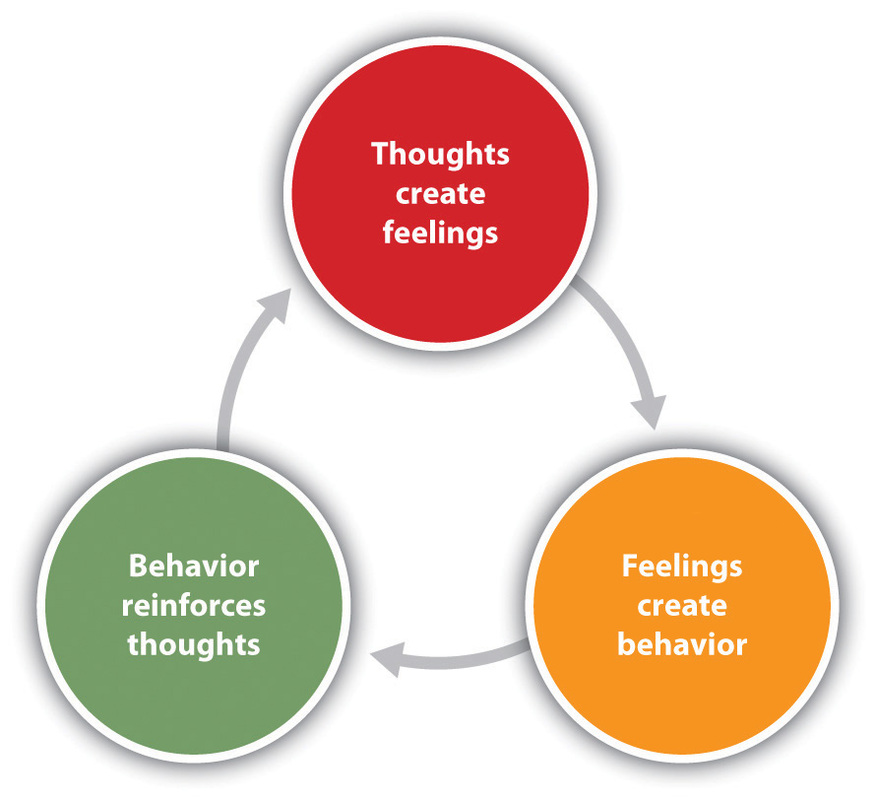In the US anxiety is the most common mental health condition. Anxiety & Depression Association of America says only 37% of people receive treatment. It does not have a quick fix. Medications are sometimes necessary, and a suitable treatment plan, but therapy can also help treat anxiety. This can discover the root cause of anxiety, and steps to combat it can also be known. Cognitive Behavioural Therapy (CBT) is one of the effective techniques.
This therapy works on negative behaviors or thought patterns to recognize and restructure them. How a person approaches a situation, CBT helps to change that. In anxiety, the negative emotions and thought patterns overshadow the positive ones. Feelings of fear and unworthiness can start to take over. The main of CBT is to work on changing the way a person thinks.
It was initially designed to treat depression, but its use has been expanded to treat several mental health conditions, including anxiety, eating disorders, marital problems, and alcohol and drug use problems. This therapy is based on the combination of the basic principles from behavioral and cognitive psychology and is most effective when combined with medication some research suggests for treating mental disorders. It is recommended as 1st line of treatment for the majority of psychological disorders in children and adolescents.
CBT for anxiety –
Nervousness and anxiety are part of survival, so feeling fearful or anxious is part of the human experience. At varying degrees, everyone faces anxiety from time to time. Many times intense panic or fear or anxiety is felt by a person, not because of the situation but because of the way they think about the situation.
When people can create a space between a situation and their thought, actions, and feeling, it gives them the power to handle the situation. It doesn’t make things worst or hold people back from the goal. Lots of people experience depends upon perception. Being able to let go of negative thoughts frees people to consider other healthier and more realistic alternatives. All these lead to an improved experience and less intense uncomfortable emotions.
When a person has had negative feelings and thoughts about a situation as time passes, it can affect its behavior. These behaviors start to become repeating patterns as time passes by. Using this technique people can learn to pay attention to those repetitive behavior patterns and actively work to change them. It will help to prevent those behaviors from happening in the future. CBT helps people find out the links of worst depression and anxiety, feelings, thoughts, behavior and physical sensations and these are connected.
Techniques used in CBT –
Cognitive restructuring – Hard look is given to the negative thought pattern. People tend to overgeneralize, place too much importance on minor details, assume the worst will happen. Thinking this way can affect people in what they do. In certain situations, the therapist will ask people about their thought processes to identify negative patterns. Once people are aware of them, they can learn how to reframe those thoughts to be more productive and positive.
Cognitive, emotional, behavioral therapy: It was developed for people with eating disorders but is now used for a range of problems like PTSD, OCD, depression, anxiety and anger problems. The aspects of CBT and dialectical behavioral therapy are combined in this. This therapy helps in understanding and tolerance of emotions to help in the therapeutic process.
Thought Challenging – This is about using actual evidence from life by considering things from many angles. It helps to view things from a more objective perspective rather than assuming that thoughts are facts. With anxiety, people have trouble rationalizing their problems. People might feel anxious but may not understand where those feelings are coming from. A person might fear something but is not sure why.
Stress inoculation training: This therapy uses a blend of behavioral, cognitive, and specific humanistic training techniques to target the stressor of a person. After a stressful event, this therapy is used to help the client cope with stress and anxiety. To train the client, there is a three-phase process to better adapt to their current stressor to use skills that they already have.
Behavioral activation: If due to anxiety a person can not do a particular activity then they can schedule it by writing in their calendar. This sets a plan in place, so people don’t keep worrying about it.
Journaling: It is also called thought recording. It helps a person to get in touch with and bring awareness to feelings and thoughts. Journaling can also help clarify and organize ideas. A person can make a list of negative thoughts and then write the positive thought to swipe the negative thought. The therapist will encourage a person to write down the new skills and behaviors to work between the therapy sessions.
Behavioral experiments: When a person experiences catastrophic thinking, this is commonly used. The person assumes that the worst is going to happen. People write down what anticipation they have about what will happen and their fears of what could happen. People will discuss with the therapist what might happen. As time pass by, people will what they predicted will mostly not happen.
Relaxation techniques: This technique reduces stress and allows a person to think more clearly. It helps a person to take back control of the situation. It includes meditation, deep breathing exercises, and progressive muscle relaxation.
Difference between the historical approach and CBT –
In the psychoanalytic approach, the therapist looks for the unconscious meaning behind the behaviors and then formulates a diagnosis. But CBT is problem-focused and action-oriented therapy. When a mental disorder is diagnosed this therapy is used to treat specific problems. To address the identified goals, the therapist helps a person to find and practice effective strategies. This therapy is based on the fact that maladaptive behaviors and thought distortion have a role in developing many psychological disorders. Symptoms and associated stress can be reduced by teaching new information-processing skills and coping mechanisms.
Criticism of CBT –
The research conducted for CBT has certain controversies. Some researchers say it is more effective than other treatments, while others have questioned such claims’ validity. In one study, it was found that this method is good at treating depression and anxiety. Some researchers reanalyzed the study and found that this technique is not as effective as other bona fide treatments.


